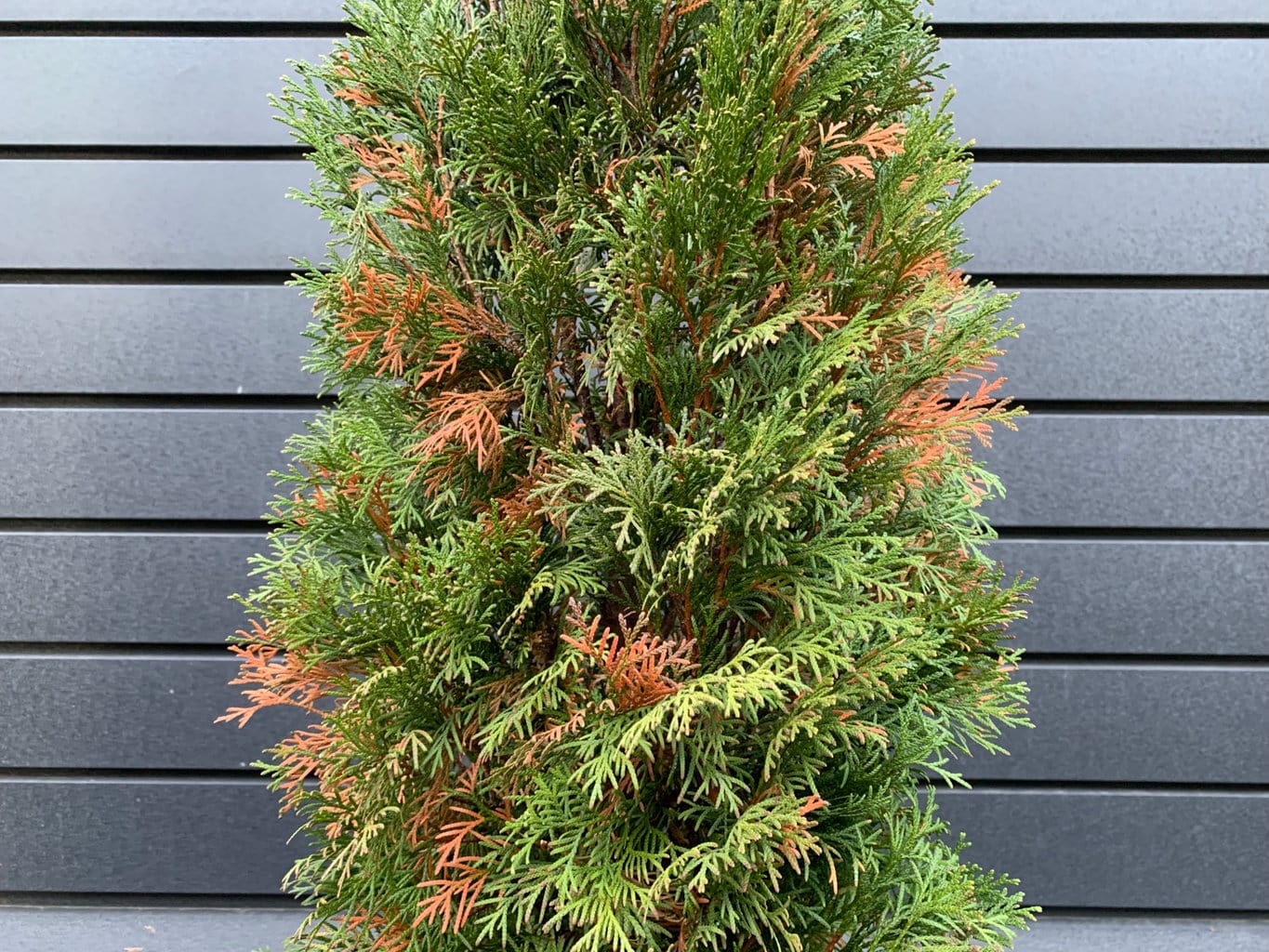
See all posts by this author
Arborvitae blight, which can be caused by Phyllosticta or Pestalotiopsis is a fungal disease that affects arborvitae trees. Infected trees display symptoms like browning and dieback at the tips of branches, often starting from the lower parts of the tree and progressing upward.
Of course, prevention and treatment for arborvitae blight is included in a Plant Health Care subscription from Arborscapes. (As are myriad other pests and diseases) If you would like to become a part of our Plant Health Care program, reach out to Arborscapes today! Your living landscape will be the envy of the entire neighborhood!
For our friends who like to DIY their plant healthcare, to manage and treat arborvitae blight, consider the following steps:
Cultural Practices
- Proper Spacing: Ensure adequate spacing between arborvitaes to promote good air circulation. This reduces humidity and the chance of fungal infections.
- Watering: Always water at the base of the tree. Avoid overhead watering which can wet the foliage and promote fungal growth.
- Mulching: Mulch around the base of the tree, but avoid piling it against the trunk. This helps retain soil moisture and prevent splashing, which can spread fungal spores.
Pruning and Sanitation
- Prune Infected Tips: Remove and discard affected branch tips. This can reduce the spread of the disease.
- Clean Tools: After pruning, sanitize your pruning tools with a solution of 10% bleach or 70% alcohol to prevent the spread of the fungus to healthy plants.
- Fall Cleanup: Collect and dispose of any fallen debris from the tree in the autumn. This can reduce the number of fungal spores in the area.
Chemical Control
- Fungicides: Products containing chlorothalonil, copper fungicides, or mancozeb can be effective against arborvitae blight. Begin applications in the spring when new growth emerges and follow the manufacturer’s recommendations regarding frequency.
- Always Read Labels: Before applying any fungicide, read the label for application rates, intervals, and safety guidelines.
Regular Monitoring
- Keep an eye on your arborvitaes, especially during wet seasons, as these conditions are conducive to fungal diseases. Early detection makes management more effective.
Consider Resistant Varieties
- If you’re planting new arborvitaes or replacing affected ones, look for varieties that are resistant or less susceptible to tip blight.
Remember that while fungicides can be effective, they are most effective when used in conjunction with good cultural practices. Maintaining the overall health of the arborvitae and ensuring proper planting and care practices will make it less susceptible to diseases like blight. Click here to read more about arborvitae blight.
And if all of this sounds like too much work, contact Arborscapes to subscribe to our Plant Health Care program, and we will take care of this, other pests, fertilization and health concerns for your living landscape!
See all posts by this author
